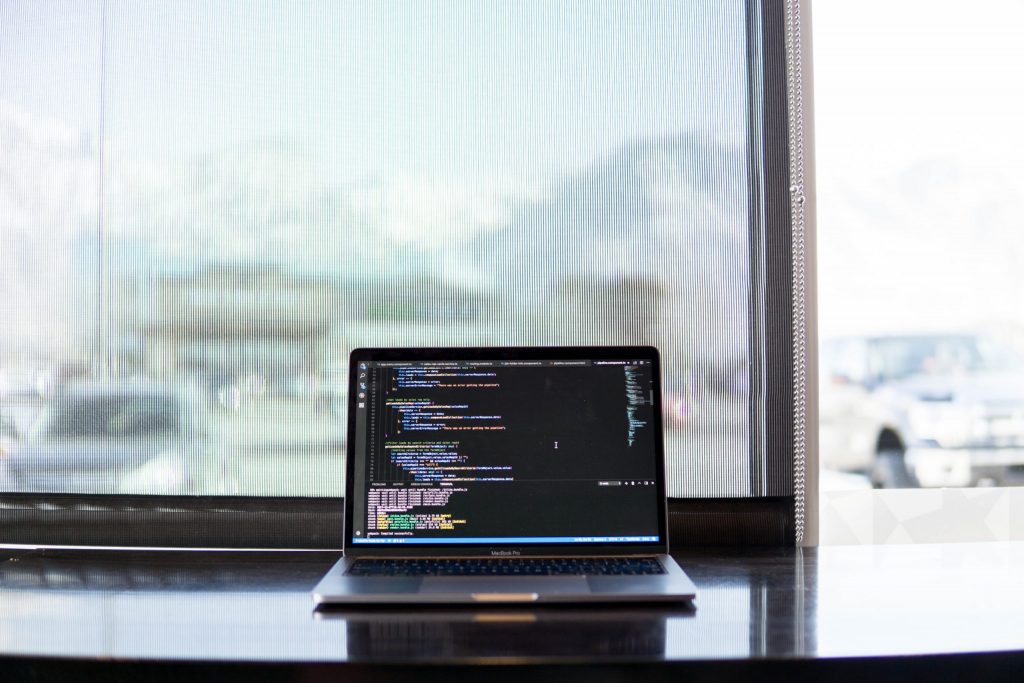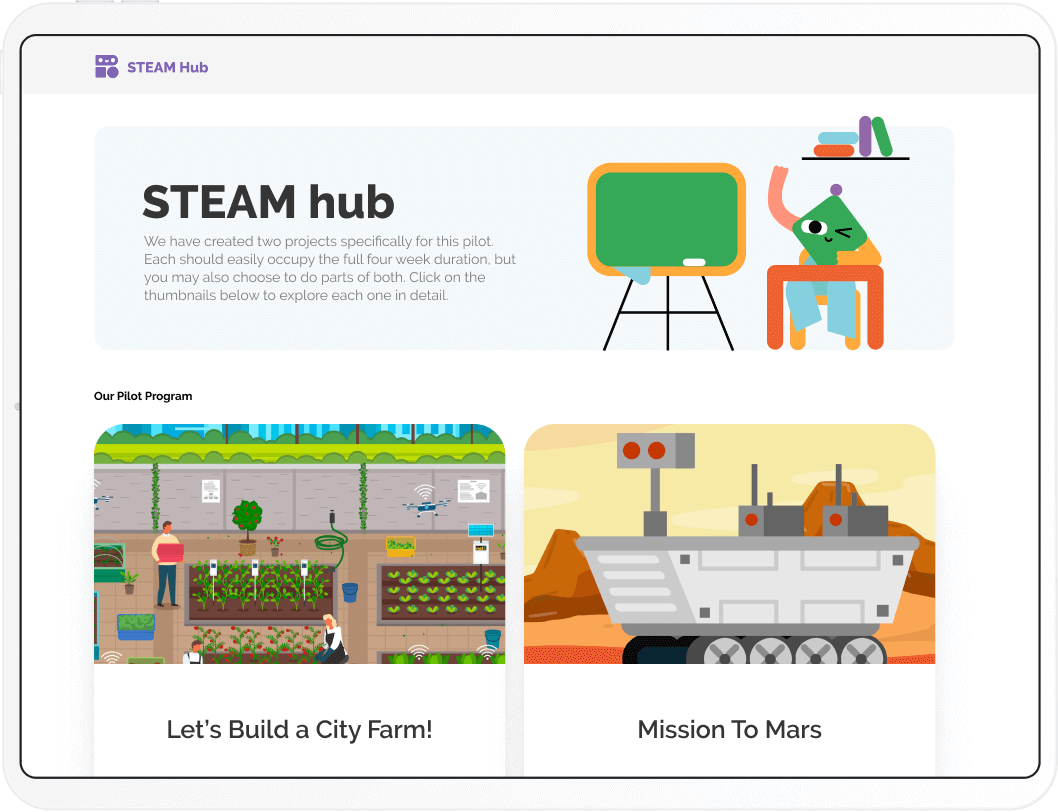
5 Best Coding Languages for Kids
.png)
How to introduce kids to coding languages? It’s not rocket science, it’s a lot of fun and you have a wide variety of methods to choose from - you don’t even need any complicated tools. We compiled the best 5 coding languages for kids to get acquainted with and a short guide on how best to approach each of them.
Coding is an inseparable part of the essential ABC’s of 21st century education. From women on maternity leave, through ambitious university students, to young curious kids – everyone’s learning to code. The tools are a-plenty and they’re available for anyone willing to invest their time. Coding languages for kids start at the very basics, ranging from those that require physical tools to those that are purely electronic. Currently, there’s around 250 coding languages in the world. And like with any language, it’s best to start learning early. We’ve compiled a short list of coding languages most appropriate for young kids in early and middle-school education for you to choose from.

But before we get ahead of ourselves – what are coding languages for kids? And more generally, what is a coding language?
Like any other language, it has its own set of rules and is used to convey instructions to a computerized device – whether that be a computer or a device. Any electronic device we use has had to have been programmed to function in the way it does. You press a button, the device gets turned on. You adjust another button, the volume increases. You twist a button and the drying fan you’re using to dry your hair changes the amount of heat it uses. Coding is in everything and it’s thus more than strategic to understand in order to create a more confident relationship with technology.
The better one understands the principles of coding – and ideally can operate as many coding languages as possible – the more confidently one can approach technology. What’s more, one can also confidently create it, and understand technology as a tool that can help us achieve our goals rather than something that intimidates us with its complexity.

There’s more than just one reason why kids should learn coding. As parents and educators, we should make sure young kids dedicate their time to coding in order to prepare them for the real world. Here’s a short list of why you shouldn’t be afraid of endeavoring on this educational mission.
- It improves critical thinking. Seeing the connections between cause and consequence, something that naturally emerges from the probing qualities of coding – trying different coding alternatives to see which one works – is a huge help for kids trying to understand the underlying connections between cause factors.
- It empowers. There’s a huge difference between simply using technology as a regular consumer and helping create it as a prosumer (producer + consumer) and modifying it according to one’s needs. This generation of young coders will grow up to have a completely different confident approach to technology, which can then transgress into other spheres of life – the ‘I can do it’ ambitious approach that coding embeds into those who use it is a process quality applicable to anything else.
- There’s a shortage of available programmers. There are millions of unfilled job opportunities just waiting for programmers to fill. As our society becomes more and more automated, and as we increasingly rely on technology to create practical shortcuts in our lives, we will simultaneously have an increased need for programmers. They will be essential to create, design, repair and constantly improve the tech solutions we will be using. What’s more, because programmers are (and will continue to be) in high demand, those who choose this career will have no difficulty finding a good job opportunity. It’s a promise of security and versatile creative opportunity just waiting to be explored.
- It teaches to embrace mistakes as learning opportunities. Coding is a trial-and-error process and requires ambitious coders to sit for hours on lines of code before they achieve their version of functional perfection. This process of looking for the ideal solution doesn’t shy away from failure – on the contrary, it encourages it as part of the process. Perhaps unsurprisingly, this is a refreshing change in a time when people so often chase perfection. Learning to adopt a mindset that doesn’t see failure as debilitating but rather as just one stop of the way, can mentally train kids to have a more easy-going approach to life and its challenges.
- It encourages a creative passion. There’s only a few things that excite us as much as the ability to create something new from scratch that carries our legacy. Children and their boundless creativity are the perfect candidates for all such endeavors. The tricky thing is that many of them lose their creative potential as they age and are comforted with the uniformity of higher education. Coding can serve as an antidote to this process, and keep alive their creative potential so that it survives into adulthood and helps them find a profession where they create exceptional new solutions each day.
- It’s practical. While theory is a necessary starting point for any educational mission, there comes a point where it needs to transpire into practical solutions and hands-on learning that allow the students a peek into the real world. Coding is all about a hands-on approach to education, never failing to remind kids how their knowledge can be applied in real life.
There’s an abundance of further reasons, which we’ve previously discussed on our blog at length and which you can delve into.
.jpg)
But what makes a coding language particularly appropriate and good for kids?
To some extent, it depends on the individual child. But there are also general rules to adhere to. Such as, simplicity. Don’t start with anything overly complicated or advanced. Don’t overwhelm a young brain with too much information. Also, consider the accessibility and practicability of different programming languages. While some are free and attract a broad community of avid coders, others don’t. Then, think of the appropriate complexity. For children aged 5-8 (5 being the ideal age to begin with first coding adventures), visual coding languages are the best way to go. Those 8 years and older can begin with full programming languages, but may still want to begin with visual cues. For teens, starting at 13, programming languages are more than appropriate.
Here’s our list of 5 variously complex programming languages and their pros and cons.
1. Scratch

This programming language for kids stemming from the Lifelong Kindergarten Group of MIT experts is best for those aged 8 to 16. Scratch consists of a building-block interface and relates the experience of coding to building constructions out of blocks – an experience young children are already familiar with due to toys like LEGO. Several programming languages are incorporated, it’s free to use (available on Mac, Windows and Linux) and it is somewhat advanced, so while we advise it for slightly older children, this does not mean they need to have any previous coding experience. Other advantages include a strong online community and a visual appeal for all those who relate to the visual the most. The drag-and-drop interface allows the creation of apps, games, and fun characters.
2. Python

While this language is considered as one of the easiest, it is not to be thought of as overly simple – many full-grown programmers use it in their daily lives. Its usefulness lies in the fact that it teaches your kids how to think like a programmer and also uses their lessons to discuss the more complex principles behind coding in child-friendly terms. It’s less visual than Scratch, which might make it more challenging for some kids. But it also offers a wide-range library filled with helpful information.
3. Blockly

This Google-developed language brings us back to a block-based interface and teaching principles. The fact that it’s from Google also means they offer plenty of resources dedicated to it. It’s visual, which makes it easier for kids to understand and is best for kids aged 10+. It also allows one to generate code in different coding languages.
Robo Wunderkind has recently released the app Robo Blockly, which is our most advanced programming app to date. Robo Blockly is meant for children aged 8-14 and it allows them to write complex code and learn concepts such as variables, functions, operators, and input-output mapping. At the same time, the intuitive drag-and-drop interface makes the process of learning a breeze.
4. Java

Even an absolute coding amateur has probably heard of Java once or twice, and for good reason. This coding language is often used to develop websites and apps. For that reason, it is more difficult than all those described above, however, once learned, it opens many doors to more difficult languages and coding projects. It’s often associated with Minecraft and incorporates a graphical interface and special software, ideally appropriate for ages 10+. For kids passionate about gaming, this would be the ideal choice.
5. C++

This one is the first choice for creating and programming Windows desktop applications – so it is another widely and professionally used coding language, often also considered the foundation for most other programming languages. At the same time, it is quite a complex solution, ideal for ages 13+. Its effective compiler-based approach for app development helps develop apps on multiple platforms. It even has a sister language, Objective-C, which was used to program apps for Apple systems.
Whichever of these systems you choose to trust, remember, it’s never too soon or too late to start. You might even end up learning a new coding language along with your kids! If you are ready to introduce your kids to coding, check out Robo Wunderkind - our tools introduce children to coding through the joy of play and inspire kids to engage with technology in a creative way.
“
Love What You’re Reading?
Subscribe to our newsletter to get more just like it, sent straight to your inbox.
Gefällt Dir, was du liest?
Melde dich für unseren Newsletter an, um weitere Informationen direkt in deinem Posteingang zu erhalten.















.png)
%20(1).png)

